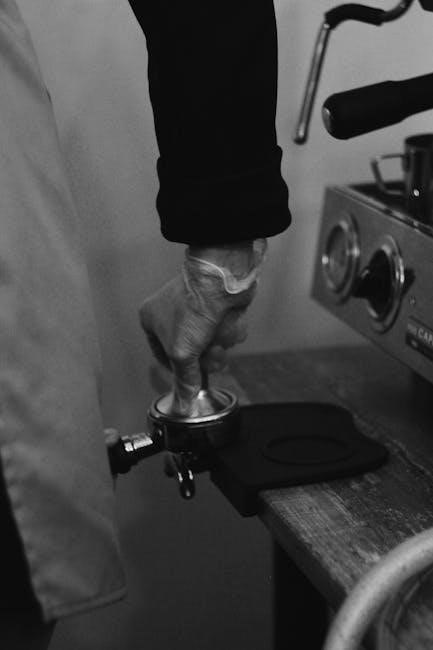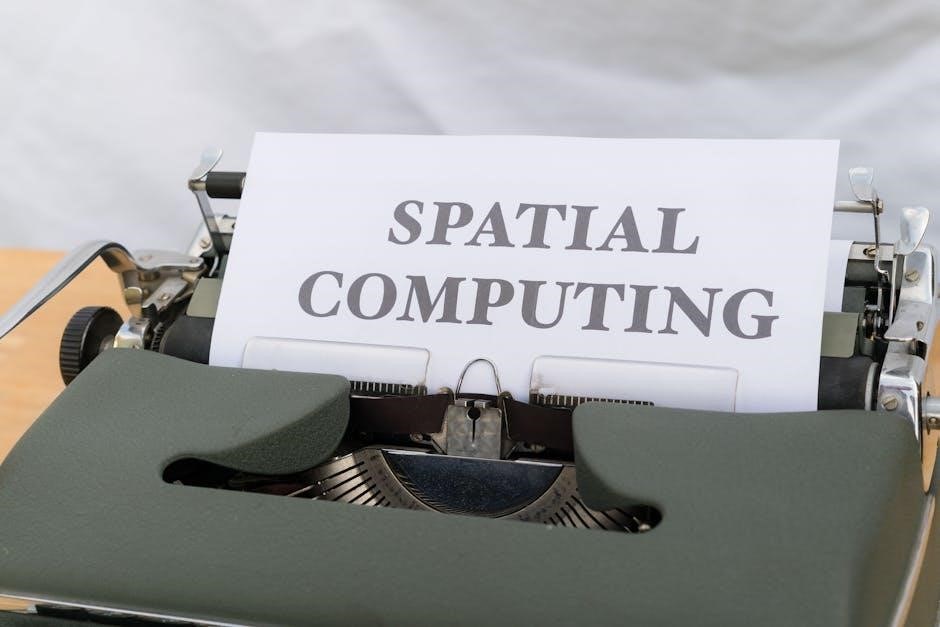Can You Change a Manual Transmission to Automatic?
Converting a manual transmission vehicle to automatic is possible, though complex․ The feasibility depends heavily on the vehicle’s make, model, and year․ Many sources suggest it’s often more cost-effective to purchase a car already equipped with an automatic transmission․
Feasibility of Conversion
The feasibility of converting a manual transmission to an automatic depends significantly on several factors․ Older vehicles, particularly those with simpler mechanical systems, are generally easier to convert than modern cars with sophisticated computer-controlled components․ The availability of compatible automatic transmissions and associated parts is crucial․ A major challenge is integrating the new transmission with the existing engine, drivetrain, and electronic systems․ This often requires significant modifications and specialized expertise․ The cost of conversion can also render the process impractical compared to purchasing an equivalent vehicle with an automatic transmission․ Some sources indicate that converting older vehicles may be simpler than newer models due to the absence of complex computer systems․ Therefore, careful assessment is necessary before undertaking such a conversion․
Cost of Conversion⁚ A Comprehensive Overview
The cost of converting a manual transmission to an automatic varies drastically depending on several key factors․ These include the vehicle’s make, model, and year; the complexity of the vehicle’s systems; the cost of the necessary parts (including the automatic transmission itself, associated components, and potentially custom fabrication); and labor costs․ A professional conversion can range from several thousand dollars to tens of thousands, depending on the vehicle and the scope of work․ The cost of a complete conversion kit, if available, will influence the total expense․ In some cases, the cost of the conversion might approach or even exceed the value of the vehicle itself, making it a financially unviable option․ DIY conversions can reduce labor costs, but require specialized knowledge and tools, potentially leading to unforeseen expenses if complications arise․ Therefore, a thorough cost analysis is crucial before proceeding․
Factors Affecting Conversion Cost
Several factors significantly impact the overall cost of a manual-to-automatic transmission conversion․ The vehicle’s year and model are primary determinants, as older vehicles often have simpler systems, potentially reducing the complexity and cost of the conversion․ Conversely, modern vehicles with sophisticated computer controls and electronic systems will likely necessitate more extensive work, driving up the cost․ The availability of a complete conversion kit significantly impacts expenses; a readily available kit simplifies the process and reduces labor costs․ Conversely, sourcing individual components and fabricating custom parts increases both cost and complexity․ The chosen mechanic’s labor rate is a substantial factor; specialized technicians with experience in such conversions command higher fees․ The need for additional parts beyond the transmission itself (e․g․, wiring harnesses, computer modules, or specialized tools) also adds to the final cost․ Finally, unforeseen complications during the conversion process can lead to unexpected expenses․
The Conversion Process⁚ A Step-by-Step Guide
This complex procedure involves several stages⁚ disassembly of the manual transmission, installation of the automatic transmission, and integration of all necessary supporting components for the new system․
Disassembling the Manual Transmission System
This initial phase requires meticulous care and a thorough understanding of the vehicle’s mechanics․ Begin by disconnecting the driveshaft, carefully removing the clutch assembly (including the pressure plate, clutch disc, and throw-out bearing)․ Next, disconnect the linkage related to the shift mechanism, ensuring to label all components for accurate reassembly (if needed)․ Support the transmission adequately before removing the mounting bolts that secure it to the engine and chassis․ Remember to carefully disconnect the wiring harness and any other connected components, taking photographs or detailed notes to aid in reassembly․ Properly draining transmission fluid is critical before attempting any removal of the transmission itself․ The process requires specialized tools and expertise; attempting this without the necessary knowledge could result in significant damage․
Installing the Automatic Transmission
With the manual transmission removed, carefully position the new automatic transmission in place․ Ensure proper alignment with the engine and bell housing, using any necessary guides or jigs․ Securely bolt the transmission to the engine and chassis, tightening bolts according to the manufacturer’s torque specifications․ Reconnecting the driveshaft requires precise alignment to prevent vibrations and damage․ Next, install the torque converter, ensuring it’s correctly seated and locked into place․ This step necessitates specific tools and a thorough understanding of the torque converter’s mechanism to avoid damage․ Once the transmission is mounted, carefully reconnect any necessary wiring harnesses and components, referencing diagrams or notes made during disassembly․ Finally, refill the transmission with the correct type and amount of fluid, checking for leaks before proceeding to the next steps․
Integrating Necessary Components
Beyond the transmission itself, several components require integration for a successful conversion․ The shift linkage and associated cables or rods from the manual system are no longer needed and must be removed․ Depending on the vehicle, a new control system for the automatic transmission might be necessary, possibly involving the installation of a new computer module or reprogramming of the existing ECU (Electronic Control Unit)․ This often involves extensive electrical work and careful attention to wiring diagrams․ The vehicle’s speedometer cable or sensor might need to be adapted or replaced to work correctly with the automatic transmission․ Furthermore, the hydraulic lines for the automatic transmission must be connected and properly sealed to prevent leaks․ Finally, any additional components, such as a cooler or filter specific to the automatic transmission, should be installed according to the manufacturer’s instructions․ Thorough testing for leaks and proper function is crucial before the final reassembly․
Challenges and Considerations
Converting a manual transmission to automatic presents significant challenges, including compatibility issues, demanding technical expertise, and potential post-conversion reliability concerns․ Careful planning is essential․
Compatibility Issues Between Models and Years
Successfully converting a manual transmission to an automatic hinges significantly on compatibility․ The process is far more straightforward with older vehicles lacking sophisticated computer controls․ Modern cars, however, present a complex challenge due to intricate electronic systems integrating engine management, transmission control, and other critical vehicle functions․ Finding a compatible automatic transmission for a specific make, model, and year can be difficult, and even if found, ensuring seamless integration with existing electronics is a major hurdle․ Simply installing the new transmission might not suffice; significant modifications to the vehicle’s wiring harness, computer programming, and other components are frequently necessary, adding considerable cost and complexity to the conversion․ This compatibility issue extends beyond just the transmission itself; it encompasses numerous related parts, demanding careful selection and precise integration to avoid unforeseen problems․ The lack of readily available conversion kits for many modern vehicles further exacerbates this challenge, often leaving owners with a complex and potentially costly undertaking․
Technical Expertise Required
Converting a manual transmission to an automatic is not a DIY project for the novice mechanic․ The process demands a high level of mechanical aptitude and specialized knowledge․ It involves intricate disassembly of the existing manual transmission system, precise installation of the automatic transmission, and careful integration of numerous related components․ Improper installation can lead to severe mechanical issues, compromising safety and vehicle functionality․ Beyond mechanical skills, a thorough understanding of automotive electrical systems is crucial, particularly in modern vehicles with complex electronic controls․ The integration of the new transmission often requires extensive wiring modifications and recalibration of the vehicle’s computer system․ Furthermore, specialized tools are needed for various tasks throughout the conversion process․ Therefore, entrusting this conversion to a qualified and experienced automotive technician with expertise in transmission systems is strongly recommended to ensure proper execution and minimize the risk of costly errors or damage․ Attempting this conversion without sufficient expertise can result in significant complications and potentially unsafe driving conditions․
Potential Reliability Concerns Post-Conversion
Converting a manual transmission to automatic introduces potential reliability concerns․ Even with professional installation, the modified drivetrain might exhibit reduced reliability compared to a factory-built automatic transmission system․ The compatibility of various components, especially in older vehicles, may present challenges․ Issues such as premature wear and tear on the new automatic transmission, electrical glitches due to wiring modifications, or unforeseen mechanical failures are possibilities․ The conversion might necessitate modifications to other vehicle systems, potentially affecting their longevity or performance․ Furthermore, sourcing compatible parts for older vehicles can be difficult, leading to potential compromises in quality or functionality․ The complexity of the conversion process itself increases the chances of unforeseen problems․ A lack of proper calibration or integration of the new transmission with the vehicle’s existing electronic systems could lead to malfunctions or reduced performance․ Therefore, thorough post-conversion inspection and testing are crucial to identify and address any potential reliability issues before regular use․
Alternatives to Conversion
Consider buying a used car with an automatic transmission or exploring aftermarket automatic transmission kits as viable alternatives to a manual-to-automatic conversion․
Purchasing a Vehicle with an Automatic Transmission
Buying a pre-owned vehicle already equipped with an automatic transmission presents a straightforward and often more economical solution compared to undertaking a complex conversion․ The cost of a conversion, including parts and labor, can significantly exceed the price difference between a comparable manual and automatic model․ This approach eliminates the extensive mechanical work, potential compatibility issues, and the risk of unforeseen complications during the conversion process․ Searching online marketplaces or visiting used car dealerships offers a wide selection of vehicles with automatic transmissions, allowing you to find one that matches your preferences and budget․ Furthermore, purchasing a used automatic vehicle avoids the potential reliability concerns that may arise after a manual-to-automatic conversion, ensuring a more dependable driving experience from the outset․ The ease and potential cost savings make purchasing an existing automatic vehicle a compelling alternative․
Exploring Aftermarket Automatic Transmission Kits
While complete conversion kits for changing a manual transmission to automatic are less common than one might expect, some aftermarket options exist, particularly for older vehicles or specific models․ These kits typically include the automatic transmission itself, along with essential components such as the torque converter, associated wiring harnesses, and potentially modified control modules․ However, it’s crucial to thoroughly research compatibility before purchasing․ Not all aftermarket kits are created equal; some might require significant modifications or custom fabrication, potentially increasing the overall cost and complexity of the project․ Moreover, the installation of an aftermarket kit often requires advanced mechanical skills and specialized tools․ Improper installation can lead to performance issues, reduced reliability, and even safety hazards․ Before pursuing this route, carefully assess your mechanical capabilities and weigh the potential challenges against the cost and time commitment involved․ Professional installation is frequently recommended to ensure proper function and longevity․
Assessing the Cost-Effectiveness of Each Option
When deciding between converting a manual transmission to automatic, buying an automatic vehicle, or using an aftermarket kit, a thorough cost-effectiveness analysis is crucial․ The conversion process, whether DIY or professional, involves significant labor costs, potentially exceeding the value of the vehicle, especially for newer models․ Online discussions highlight costs ranging from $15,000 to $30,000 for professional conversions, sometimes nearing the price of a new economy car․ Purchasing a used vehicle with an automatic transmission presents a simpler, potentially more affordable alternative, especially considering the time investment avoided in a conversion․ Aftermarket kits offer a middle ground, but their compatibility and installation complexity significantly influence the overall cost․ Factor in the price of the kit, potential additional parts, and labor charges for professional installation․ Consider the vehicle’s value and your mechanical skills before committing to any option; a cost-benefit analysis, factoring in time and potential complications, is essential for a financially sound decision․
Weighing the Pros and Cons
Converting a manual transmission to automatic presents a complex decision with significant financial and practical implications․ While technically feasible, the process is often expensive and time-consuming, potentially exceeding the value of older vehicles․ Online resources frequently cite conversion costs ranging from $15,000 to $30,000, a figure that often rivals the cost of purchasing a used vehicle already equipped with an automatic transmission․ This alternative offers a simpler, more predictable solution․ Aftermarket kits offer a middle ground, but compatibility and installation challenges must be carefully weighed․ The convenience of an automatic transmission should be balanced against the considerable investment required for a conversion․ Ultimately, the decision hinges on a careful assessment of cost, time commitment, mechanical skill, and the vehicle’s overall value․ For many, buying an automatic car directly proves the most cost-effective and practical approach․



Be the first to reply